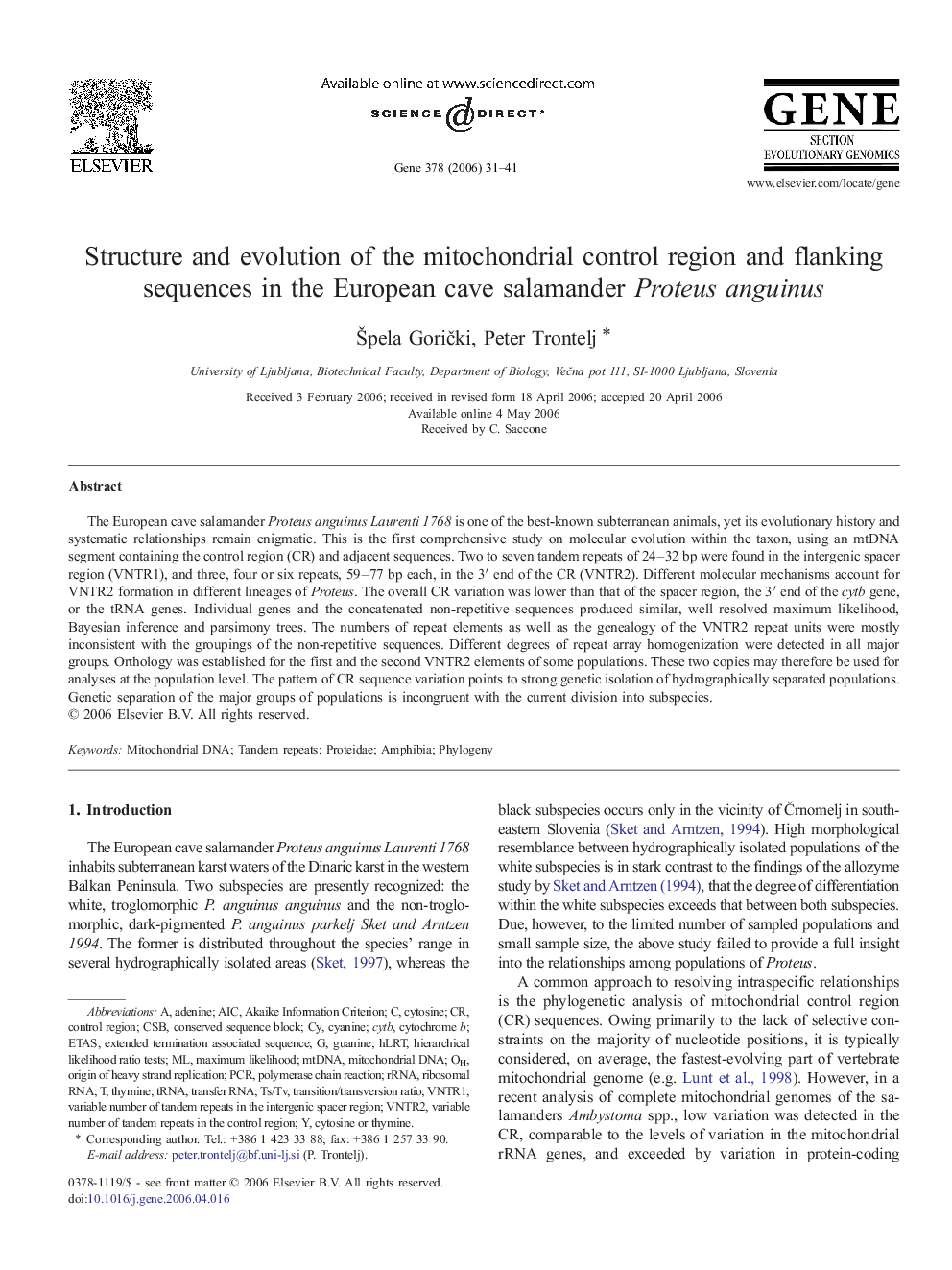| Article ID | Journal | Published Year | Pages | File Type |
|---|---|---|---|---|
| 2820198 | Gene | 2006 | 11 Pages |
The European cave salamander Proteus anguinus Laurenti 1768 is one of the best-known subterranean animals, yet its evolutionary history and systematic relationships remain enigmatic. This is the first comprehensive study on molecular evolution within the taxon, using an mtDNA segment containing the control region (CR) and adjacent sequences. Two to seven tandem repeats of 24–32 bp were found in the intergenic spacer region (VNTR1), and three, four or six repeats, 59–77 bp each, in the 3′ end of the CR (VNTR2). Different molecular mechanisms account for VNTR2 formation in different lineages of Proteus. The overall CR variation was lower than that of the spacer region, the 3′ end of the cytb gene, or the tRNA genes. Individual genes and the concatenated non-repetitive sequences produced similar, well resolved maximum likelihood, Bayesian inference and parsimony trees. The numbers of repeat elements as well as the genealogy of the VNTR2 repeat units were mostly inconsistent with the groupings of the non-repetitive sequences. Different degrees of repeat array homogenization were detected in all major groups. Orthology was established for the first and the second VNTR2 elements of some populations. These two copies may therefore be used for analyses at the population level. The pattern of CR sequence variation points to strong genetic isolation of hydrographically separated populations. Genetic separation of the major groups of populations is incongruent with the current division into subspecies.
